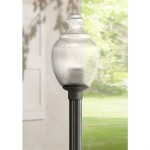How to Preserve Outdoor Wood Furniture
Outdoor wood furniture offers a blend of aesthetic appeal and functional utility to patios, decks, and gardens. However, exposure to the elements – including sun, rain, snow, and fluctuating temperatures – can significantly degrade wood, leading to warping, cracking, fading, and rot. Preserving outdoor wood furniture requires proactive measures and consistent maintenance to extend its lifespan and maintain its visual appeal.
The type of wood significantly influences its durability and resistance to weathering. Teak, cedar, and redwood are naturally resistant to decay and insects due to their inherent oils. However, even these hardwoods require protection to prevent weathering effects like fading and surface cracking. Softer woods, like pine or fir, need more extensive treatment due to their greater susceptibility to moisture absorption and pest infestations.
Proper preservation involves several stages, from initial treatment to ongoing maintenance. Understanding the specific needs of the wood type and the climate are crucial for selecting the most appropriate preservation methods.
Initial Treatment and Protection
Before placing new wooden furniture outdoors, an initial treatment is essential. This pre-emptive step establishes a protective barrier against the elements and helps prevent future damage. The specific treatment will depend on the type of wood. For hardwoods like teak and cedar, a penetrating oil finish is often recommended. For softer woods, a primer followed by a paint or stain is typically necessary.
Cleaning: Prior to applying any protective finish, the wood surface must be thoroughly cleaned. Remove dirt, debris, and any existing coatings. A mild soap and water solution, combined with a scrub brush, is usually sufficient. For stubborn grime or mildew, a specialized wood cleaner or a diluted bleach solution (following the manufacturer’s instructions and safety precautions) may be required. Allow the wood to dry completely before proceeding.
Sanding: Sanding smoothes the wood surface, removing imperfections and creating a better surface for finishes to adhere. For new furniture, a light sanding with fine-grit sandpaper is often sufficient. For older furniture with existing finishes, more aggressive sanding may be necessary to remove the old coating completely. Always sand in the direction of the wood grain and wear appropriate safety gear, such as a dust mask.
Sealing: Wood sealers penetrate the wood, preventing moisture from seeping in and causing damage. Select a sealer appropriate for outdoor use and compatible with the type of wood being treated. Apply the sealer according to the manufacturer’s instructions, ensuring even coverage. For hardwoods, teak oil or linseed oil are typical choices. For softer woods, a specialized wood sealer formulated for exterior use is crucial.
Painting or Staining: Painting provides a durable, opaque layer of protection, while staining enhances the wood's natural grain while adding color and protection. Choose paints or stains specifically formulated for exterior use, as these contain UV inhibitors and mildewcides. Apply several thin coats, allowing each coat to dry completely before applying the next. Follow the manufacturer's recommendations for surface preparation and application techniques. For best results, apply a primer prior to painting, especially on softer woods.
Regular Cleaning and Maintenance
Even with initial treatment, regular cleaning and maintenance are crucial for preserving outdoor wood furniture. Dirt, mildew, and other contaminants can accumulate on the surface, compromising the protective finish and accelerating deterioration. Periodic cleaning and reapplication of protective coatings help to maintain the furniture's appearance and structural integrity.
Routine Cleaning: Clean outdoor wood furniture regularly, ideally every few weeks or months, depending on the environment. Use a mild soap and water solution and a soft brush or cloth to gently scrub the surface. Avoid using harsh chemicals or abrasive cleaners, as these can damage the finish. Rinse thoroughly with clean water and allow the furniture to dry completely. For areas prone to mold and mildew, consider using a cleaner with mildewcidal properties.
Inspection: Regularly inspect your outdoor wood furniture for signs of damage, such as cracks, splinters, loose joints, or insect infestations. Address any issues promptly to prevent further deterioration. Small cracks can be filled with wood filler, loose joints can be tightened, and insect infestations should be treated with an appropriate insecticide formulated for wood.
Reapplication of Protective Coatings: Over time, the protective finish on outdoor wood furniture will degrade due to exposure to the elements. Reapply sealant, stain, or paint as needed to maintain the protective barrier. The frequency of reapplication will depend on the type of finish used, the climate, and the level of exposure to the elements. A good rule of thumb is to reapply every one to two years, or whenever the finish shows signs of wear or fading. Prepare the surface by cleaning and lightly sanding before applying the new coating.
Addressing Mold and Mildew: Mold and mildew thrive in damp, shady environments and can cause significant damage to wood. If you notice signs of mold or mildew growth, clean the affected area with a solution of water and bleach (diluted according to the manufacturer’s instructions). Scrub the surface to remove the mold or mildew, rinse thoroughly with clean water, and allow the furniture to dry completely. Consider applying a mildewcidal sealant or paint to prevent future growth.
Protection from the Elements
Providing physical protection from the elements is another key aspect of preserving outdoor wood furniture. Minimizing direct exposure to sun, rain, and snow will significantly extend the furniture's lifespan and reduce the need for frequent maintenance.
Covering Furniture: When not in use, covering outdoor wood furniture with waterproof covers is an effective way to protect it from the elements. Choose covers made from breathable materials to prevent moisture buildup, which can lead to mold and mildew growth. Ensure the covers fit snugly but are not so tight that they restrict airflow. Covers are especially important during periods of heavy rain, snow, or prolonged sun exposure.
Storing Furniture Indoors: If possible, store outdoor wood furniture indoors during the off-season or periods of inclement weather. A garage, shed, or basement provides excellent protection from the elements. Clean and dry the furniture thoroughly before storing it to prevent mold and mildew growth. If indoor storage is not feasible, consider stacking the furniture under a covered area to minimize exposure to rain and snow.
Strategic Placement: The placement of outdoor wood furniture can also impact its longevity. Avoid placing furniture directly under trees, as falling leaves, sap, and bird droppings can stain and damage the finish. Position furniture in areas that receive partial shade to reduce exposure to direct sunlight. Ensure adequate drainage around the furniture to prevent water from pooling and causing rot. Using furniture feet or risers can also help to elevate the furniture and prevent it from sitting directly on wet surfaces.
Proper Ventilation: Ensuring proper ventilation around outdoor wood furniture is essential for preventing moisture buildup and promoting drying. Avoid placing furniture too close to walls or other structures that restrict airflow. If using covers, choose breathable materials and ensure they are not creating a sealed environment. Regular cleaning and inspection will also help to identify and address any areas where moisture may be accumulating.
By implementing these strategies for initial treatment, regular maintenance, and protection from the elements, it is possible to significantly extend the lifespan of outdoor wood furniture. This proactive approach preserves the beauty and functionality of the furniture, providing years of enjoyment.

How To Protect Outdoor Wood Furniture Osmo

How To Re And Protect Outdoor Wood Furniture Love Grows Wild

How To Protect And Care For Outdoor Wood Furniture Timber Table

How To Protect Outdoor Wood Furniture

Outdoor Wood Furniture Protection Do It Best

How To Protect Outdoor Wood Furniture Osmo

How To Re And Protect Outdoor Wood Furniture Love Grows Wild

The Best Way To Protect Care For Outdoor Wood Furniture Between Naps On Porch

Outdoor Furniture Maintenance Ensure A Stunning Garden 365 Days

5 Ways To Protect Outdoor Wood Furniture Rismedia







